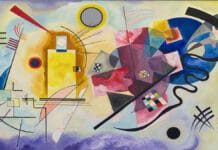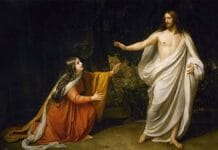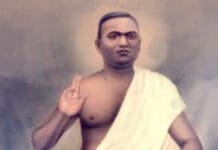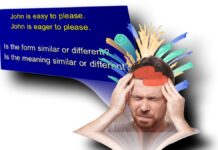Modernism and Postmodernism are two significant movements in literature, art, architecture, and culture that emerged in response to the dramatic changes in society, technology, and worldviews in the late 19th and 20th centuries. These movements reflect shifts in how people understood the world, art, and the role of individuals within society. While they share some commonalities, they are distinct in their approaches, philosophies, and styles.
Modernism
Modernism is a broad cultural, artistic, and literary movement that emerged in the late 19th and early 20th centuries, primarily as a response to the rapid industrialisation, urbanisation, and the horrors of World War I. It was characterised by a deliberate break from traditional forms, a search for new means of expression, and an exploration of the inner self and consciousness.
Modernism arose during immense social, political, and technological change. The Industrial Revolution transformed economies, and urbanisation changed the way people lived. World War I shattered the old world order, leading to widespread disillusionment. Scientific advancements and the emergence of new philosophies challenged traditional beliefs about religion, society, and the nature of reality.
Characteristics of Modernism
Experimentation with Form and Style
Modernist writers and artists rejected traditional forms and experimented with new techniques. This included stream-of-consciousness writing, fragmented narratives, and non-linear timelines. The idea was to capture the complexities of the human mind and the fractured reality of the modern world.
Subjectivity and Inner Experience
Modernism focuses on the individual’s inner experience, emphasising subjectivity over objectivity. This often involved exploring the subconscious, dreams, and memories, as seen in the works of writers like James Joyce and Virginia Woolf.
Rejection of Realism
Modernists rejected the conventions of realism, which aimed to depict life accurately and objectively. Instead, they sought to portray the world from a subjective perspective, often focusing on the alienation and disorientation of modern life.
Themes of Alienation and Disillusionment
The devastation of World War I led to widespread disillusionment with traditional values. Modernist works often explore alienation, loss, and the breakdown of social norms.
Influence of Psychoanalysis
Sigmund Freud’s theories of the unconscious mind had a significant impact on modernist literature and art. Writers and artists were fascinated by the idea that a deeper, often darker, reality lay beneath the surface of conscious thought.
Key Figures and Works
Literature
- Stream of consciousness technique (James Joyce, Virginia Woolf)
- Fragmented narratives (T S Eliot, Ezra Pound)
- Exploration of alienation and psychological dept
James Joyce’s Ulysses, Virginia Woolf’s Mrs Dalloway, T S Eliot’s The Waste Land, and Franz Kafka’s The Metamorphosis are seminal modernist texts.
Art
- Abstract expressionism (Jackson Pollock, Willem de Kooning)
- Cubism (Pablo Picasso, Georges Braque)
- Surrealism (Salvador Dalí, René Magritte)
Pablo Picasso’s Cubism, Wassily Kandinsky’s abstract art, and Marcel Duchamp’s Dadaist works.
Architecture
- Functionalism and minimalism (Le Corbusier, Bauhaus)
- Use of new materials like steel and glass
- “Form follows function” principle
Le Corbusier’s functionalism and the Bauhaus movement, Walter Gropius.
Music
- Atonality and twelve-tone technique (Arnold Schoenberg)
- Jazz and its various forms
Igor Stravinsky’s The Rite of Spring and Arnold Schoenberg’s atonal music.
Philosophy
- Existentialism (Jean-Paul Sartre, Albert Camus)
- Phenomenology (Edmund Husserl, Maurice Merleau-Ponty)
Postmodernism
Postmodernism is a cultural, artistic, and literary movement that emerged in the mid-to-late 20th century. It is often seen as a reaction against or continuation of Modernism. Postmodernism is characterised by a questioning of grand narratives, a focus on relativism and subjectivity, and an embrace of irony, playfulness, and pastiche.
Postmodernism arose after World War II, during rapid technological advancement, the rise of mass media, and the questioning of authority and truth. The horrors of the Holocaust and the use of atomic bombs led to a deep scepticism of progress and the narratives that justified such actions. The civil rights movements, feminist movements, and the rise of consumer culture further contributed to the postmodernist perspective.
Characteristics of Postmodernism
Fragmentation and Pastiche
Postmodern works often embrace fragmentation, combining styles, genres, and references in a single job. Pastiche, or the imitation of various styles, is common, reflecting the belief that originality is impossible and that all art is a remix of previous works.
Irony and Playfulness
Postmodernism often employs irony, parody, and playfulness. This can be seen as a reaction against the seriousness and earnestness of Modernism. Postmodern works frequently question the nature of art and literature, often blurring the lines between reality and fiction.
Intertextuality
Postmodern works are often highly intertextual, meaning they reference or borrow from other texts, sometimes in obvious ways and other times more subtly. This reflects the idea that all texts are interconnected and that meaning is not fixed but fluid.
Questioning of Grand Narratives
Postmodernism is sceptical of grand narratives or overarching explanations that claim to be universally true. Instead, it favours multiple perspectives, relativism, and the idea that truth is subjective and constructed by individuals or cultures.
Metafiction and Self-referentiality
Postmodern literature often draws attention to its status as a constructed text. This can include breaking the fourth wall, where characters address the reader directly, or using metafiction, where the text reflects on its creation and the nature of storytelling.
Key Figures and Works
Literature
- Metafiction (John Barth, Italo Calvino)
- Magical realism (Gabriel García Márquez, Salman Rushdie)
- Intertextuality and genre-blending
Important postmodern texts are Thomas Pynchon’s Gravity’s Rainbow, Don DeLillo’s White Noise, Salman Rushdie’s The Midnight’s Children, and Kurt Vonnegut’s Slaughterhouse-Five.
Art
- Pop Art (Andy Warhol, Roy Lichtenstein)
- Conceptual art (Joseph Kosuth, Yoko Ono)
- Performance art and installations
Andy Warhol’s Pop Art, Jean-Michel Basquiat’s neo-expressionism, and the works of Cindy Sherman and Jeff Koons.
Architecture
- Eclectic mix of styles and ornamentation
- Rejection of modernist austerity
- Playful and often ironic designs (Robert Venturi, Frank Gehry)
The work of architects like Frank Gehry, Robert Venturi and Philip Johnson, who embraced playful and unconventional designs.
Music
- Minimalism (Philip Glass, Steve Reich)
- Experimental and electronic music
- Sampling and remixing in popular music
Film
Quentin Tarantino’s Pulp Fiction and David Lynch’s films, which often blur the line between genres and challenge narrative conventions.
Philosophy
- Deconstruction (Jacques Derrida)
- Poststructuralism (Michel Foucault, Roland Barthes)
- Feminist and postcolonial theories
Comparing Modernism and Postmodernism
Attitudes Toward Tradition
Modernism: While Modernism breaks away from tradition, it often does so to find new, usually universal truths. Modernist artists and writers sought to create a new language for art and literature that could capture the complexity of the modern world.
Postmodernism: Postmodernism, on the other hand, questions the very notion of universal truths. It is more sceptical that any perspective can capture reality, often embracing ambiguity and diversity. Postmodernists are more likely to play with and deconstruct traditional forms rather than seek to replace them with something new.
Narrative Structure
Modernism: Modernist narratives tend to be fragmented and non-linear but are often unified by a search for meaning or a coherent theme. They usually focus on the individual’s inner life and subjective experience.
Postmodernism: Postmodern narratives are often even more fragmented and may resist any unifying theme or message. They may include multiple conflicting perspectives, and the very idea of a coherent narrative may be questioned or subverted.
Approach to Art and Reality
Modernism: Modernists believed in the power of art to reflect and shape reality. They often saw art as a way to express profound truths about the human experience.
Postmodernism: Postmodernists are more likely to view art as a construct that doesn’t necessarily reflect reality but instead plays with it. They often challenge the idea that art has any obligation to represent truth, focusing instead on the fluid, constructed nature of meaning.
The Role of the Author or Artist
Modernism: The modernist author or artist is often seen as a visionary who can create new forms and ideas that challenge the status quo.
Postmodernism: In contrast, the postmodernist artist is more likely to see themselves as a participant in a broader cultural dialogue, remixing and reinterpreting existing forms rather than creating something entirely new. The “death of the author“, where the author’s intentions are deemed irrelevant to interpreting a text, is a postmodern idea.
| Feature | Modernism | Postmodernism |
|---|---|---|
| Attitude towards tradition | Rejection | Reappropriation and reinterpretation |
| View of reality | Fragmented and subjective | Multiple and constructed |
| Style | Experimental and innovative | Playful, ironic, and eclectic |
| Focus | Individual and alienation | Society, culture, and media |
| Tone | Serious and often pessimistic | Often humorous and ironic |
Modernism and Postmodernism are both responses to the dramatic changes in society and thought during the 20th century. While Modernism sought to find new forms and truths in response to a rapidly changing world, Postmodernism questioned the possibility of such truths and embraced ambiguity, irony, and the play of forms. While Modernism and Postmodernism represent distinct artistic and intellectual movements, they are also interconnected and mutually influential. Many works of art and literature exhibit elements of both and the boundaries between the two are often blurred. Together, these movements represent the complexity of the 20th century, reflecting the anxieties, hopes, and contradictions of the modern era. Understanding these movements allows us to appreciate how art and literature have grappled with the profound challenges of modernity and postmodernity.




























